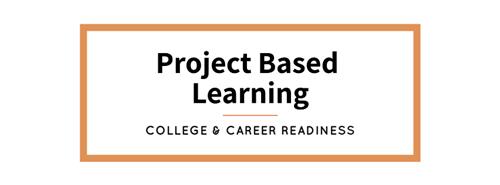- Technical Academies of Minnesota
- About DREAM
- Project Based Learning
Prospective Families
Page Navigation
-
Individualized | Experienced-based | Student-led

What is project-based learning (PBL) and what does a project look like?
There really isn’t a simple answer to that question, because projects can be anything after all and the process is different for everyone.
Project-Based Learning (PBL) can be done individually or in groups and offers students authentic learning opportunities, autonomy, mastery, and purpose. Project ideas are generated through student-influenced inquiry, aligned with the state standards, and in collaboration with one’s advisor.
Project-based learning is an innovative approach to education where students are encouraged to actively explore real-world scenarios and challenges and develop a deeper knowledge of the subject. PBL helps students to learn and accept challenges in the real world by emulating what professionals encounter on a daily basis.
Project-based learning:
- Provides an emphasis on the student to focus on the big open-ended question, challenge, or concept to study and solve
- Focuses on what students really need to know from an academic standpoint so they can understand the problem and solve it
- Focuses on students asking questions rather than simply feeding them the answers
- Emphasizes the development of vital 21st Century skills like creativity, communication, collaboration, and critical thinking, just to name a few
- Develops student choice into the process
- Requires students to present their research process, methods, problems encountered, and results
Deeper Engagement and Long Term Retention
In a traditional classroom, the focus is mostly on short-term memorization methods where students learn the concept, take a test, pass and most likely forget that they even studied the subject in the first place. In project-based learning, the focus is creating an environment for students to engage deeper into the subject matter with targeted content with the objective of bringing about long-term retention. This approach helps encourage better student perceptions about education due to its inherent characteristic of keeping them engaged. The PBL structure is based on developing intrinsic motivation, due in part largely to its focus on student learning around a central question and a momentous outcome.
A Mastery of Real World Skill Sets
Due to project-based learning’s focus on 21st Century Skills, students also develop and master technology abilities that they can use and become an expert at when they become professionals in the future. PBL is the perfect approach for helping students develop not just problem-solving skills that are an absolute necessity in the 21st Century workplace, but crucial communication and collaborative skills needed to successfully tackle a problem with others, not just themselves alone. The collaborative nature of projects in PBL reinforces the social-emotional learning principles being taught in progressive academic institutions the world over.
Addresses All Student Needs
Due to its emphasis on enhancing 21st Century Skillsets, technology-based PBL improves students’ tech abilities and addresses the entire strata of student needs and learning styles as it involves an approach that is collaborative, interdisciplinary, focused on inquiry, self-directed, hands-on, and motivates students to their full potential.
Project-based learning offers a radical departure from what we are used to in the classroom. It requires teachers to coach more and instruct less and to accept interdisciplinary learning as opposed to remaining isolated with single-subject knowledge and to become more comfortable with uncertainty & discovery in the learning process. It is the future of modern education that empowers students and makes them more suited to face the challenges of real life.



